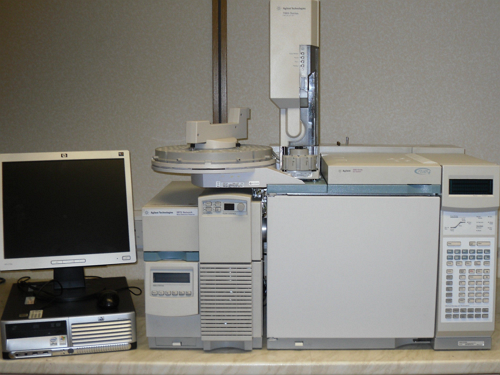Analysis of Oleic Acid
Oleic acid (9Z-octadecenoic acid/ 18:1 cis-9) is a monounsaturated fatty acid of 18 carbon atoms.
It is an omega-9 fatty acid.
Olive oil is the richest source of oleic acid, with a concentration of 75-83%. Other significant plant sources of olive oil are papaya seed oil, avocado oil, canola oil, hazelnut oil and pecan oil.
Oleic acid has been reported to be one of the abundant fatty acids found in certain species of seaweeds that belong to Ulva, Laminaria and Sargassum genera. However, a significant variation in the oleic acid content is observed between the same macroalgal species isolated from different geographical locations.
Some oleaginous yeasts contain high levels of oleic acid. One such example is Yarrowia lipolytica.
As oleic acid could impede cholesterol biosynthesis, an oleic acid-rich diet may attribute the health benefits such as lowering LDL cholesterol and reducing the risk of coronary heart disease. Salts of oleic acid are excellent surfactants and are used in the food, cosmetic and pharmaceutical industries. Additionally, some personal care products contain oleic acid as an emollient.
Olive oil is the richest source of oleic acid, with a concentration of 75-83%. Other significant plant sources of olive oil are papaya seed oil, avocado oil, canola oil, hazelnut oil and pecan oil.
Oleic acid has been reported to be one of the abundant fatty acids found in certain species of seaweeds that belong to Ulva, Laminaria and Sargassum genera. However, a significant variation in the oleic acid content is observed between the same macroalgal species isolated from different geographical locations.
Some oleaginous yeasts contain high levels of oleic acid. One such example is Yarrowia lipolytica.
As oleic acid could impede cholesterol biosynthesis, an oleic acid-rich diet may attribute the health benefits such as lowering LDL cholesterol and reducing the risk of coronary heart disease. Salts of oleic acid are excellent surfactants and are used in the food, cosmetic and pharmaceutical industries. Additionally, some personal care products contain oleic acid as an emollient.
Click here to place an order for determining Oleic Acid.
Request a QuoteOleic Acid Content
Analysis Packages for Oleic Acid
Equipment Used for Oleic Acid Analysis

Gas Chromatograph with Mass Spectrometer (GC-MS)
Our lab has an Agilent 6890 gas chromatograph (GC) coupled to an Agilent 5973 mass selective detector (Mass Spectrometer).
Additional Material
We can determine the Oleic Acid content of biomass, click here to learn more about our various biomass analysis methods.
We can determine the Oleic Acid content of seaweed, click here to learn more about our various methods for analysing seaweed.
We can determine the Oleic Acid content of microalgae, click here to learn more about our various methods for analysing algae.
We can determine the Oleic Acid content of seaweed, click here to learn more about our various methods for analysing seaweed.
We can determine the Oleic Acid content of microalgae, click here to learn more about our various methods for analysing algae.




